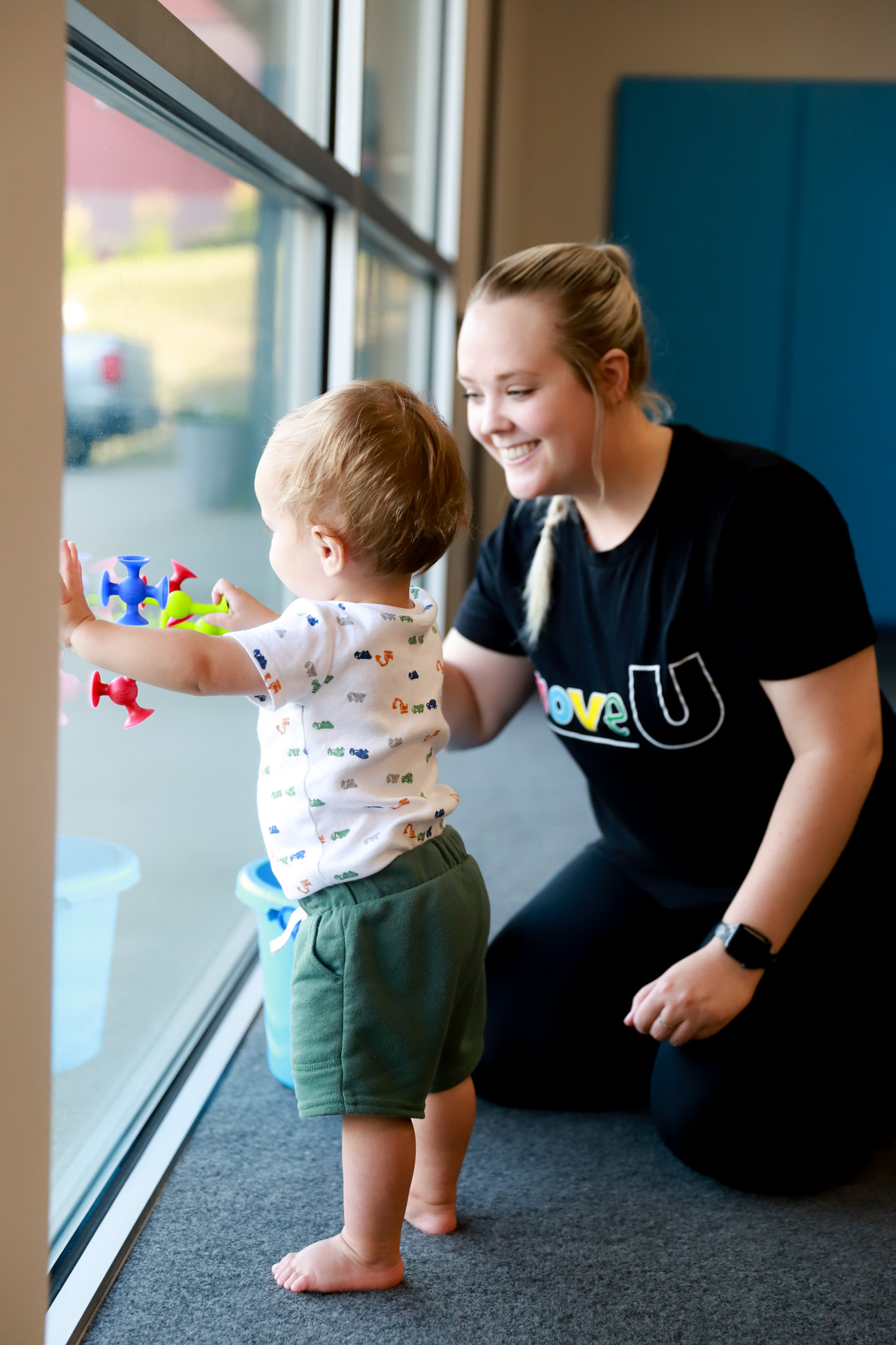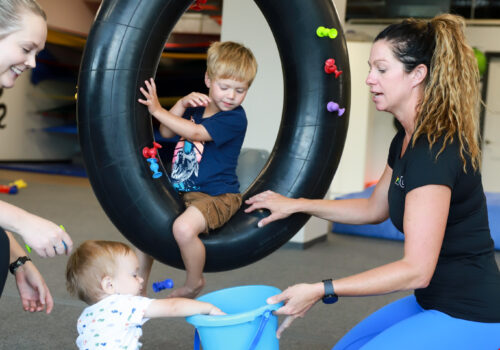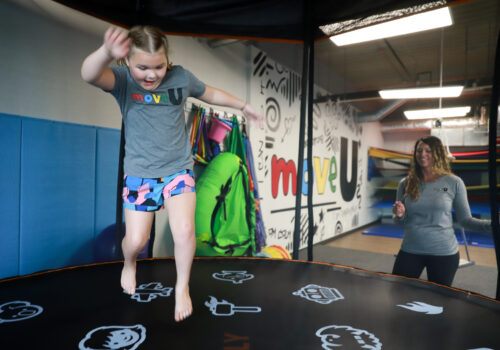Co-authored by: Kylee Withrow & Kristin Wittmayer
Spring is just around the corner, and we can’t wait for the longer days and warmer weather! It’s time to get back to playing in the backyard, parks, and nature. Winter can make it challenging to get the rich sensory and motor play that we love and that our bodies benefit from. Spending time outdoors offers an abundance of opportunities to move, problem solve, be creative, and work together all within an expansive sensory environment. Here are a few sensory rich spring time activities for you to do with your children:
- Blowing bubbles: This is a really simple yet versatile activity that engages kids of all ages and abilities. You can blow bubbles and have the child reach for and pop as many bubbles as they can. This requires our vision to look at and direct our finger towards the bubble at just the right time. Our movement system must keep our body steady and balanced as we move and reach our arms out. Popping the bubbles from a variety of positions targets balance and coordination with both sides of the body. We can add executive functioning into the game by taking turns with peers or using “freeze-unfreeze” type of play. Blowing bubbles is also a regulating activity because it requires us to bring awareness to our breath and control our exhale as we blow carefully at the bubble wand. Research shows that practicing slow, deep breathing is important for children’s regulation and attention—Bubbles are a fun way to practice this sensory-rich regulation technique! (Obradović et al., 2021)
- Picnic: An outdoor picnic is a great opportunity to work on food learning. We can incorporate familiar and new foods into the picnic to expand our diet. It is a playful opportunity for the child to get comfortable with different food textures, smells, and tastes. It also allows the child to help pick out some of the foods or find a favorite blanket to be used. We recommend having a food learning plate with the new food items so that trying those foods is an invitation and not an expectation. Parents can model different ways of interacting with the new foods by touching, smelling, or tasting it. These positive experiences will help our child increase their preferred foods all while enjoying the social component of mealtime with family.
- Easter Egg Hunt: It doesn’t have to be Easter to go out for an egg hunt! And the eggs don’t have to be filled with candy (try craft pom-poms, small figurines, etc). Searching for and collecting the eggs challenges our vision, spatial awareness (where is my body compared to the other things around me?), motor planning, and sequencing. Fine motor skills can be addressed with using both hands to open/close the eggs and pinching with just-right amount of force to grab the item inside. Color or number matching games can be incorporated in the hunt, too.
- Planting: Including your child with planting flowers or a garden is a great sensory opportunity for him/her! Our hands have to get messy with dirt, water, and various seeds/plants, providing lots of touch input to the body. If your child is unsure about the mess, they can still be involved by using a play shovel to dig a small hole in the dirt while you place the plant into the spot. Maybe they help you decide where to plant this or that in the garden or assist with watering the plants with the watering can. No matter what, keeping the experience fun and engaging will help the child become more comfortable around the various messy textures.
- Unstructured Play: Forget the rules and guidance and just let your child explore the outdoors. Simple as that. Why? Because it’s important that children have opportunities to imagine and direct their own play with the available “toys” in front of them. How many ways can we play with ____? What could we use to build a ____? In the OT world, this dynamic process is called ideation & motor planning (I have an idea and I can execute it) and it’s a critical skill for everyday life. Unstructured play gives the child a chance to try new sensorimotor experiences, like making big vs small splashes in a water puddle or drawing a picture in the dirt with a stick. If your child seems stuck or unsure what to do without your direction, give them small supports and open-ended questions. For example, maybe you pick up a leaf, a few twigs, and a rock. After constructing something, you can say “Look! I made a tent for the camping trip! What else does our campsite need?” Collaborate with the child and decrease your level of help as the child begins to take the lead and imagine on their own.
If your child struggles with these types of play or other everyday activities, reach out to Move U to see if an OT evaluation would be right for your child! We’d love to help your child overcome any challenges they face and build confidence in their ability to play, learn, and be a kid.
Sources.
Obradović, J., Sulik, M. J., & Armstrong‐Carter, E. (2021). Taking a few deep breaths significantly reduces children’s physiological arousal in everyday settings: Results of a preregistered video intervention. Developmental Psychobiology, 63(8). https://doi.org/10.1002/dev.22214



